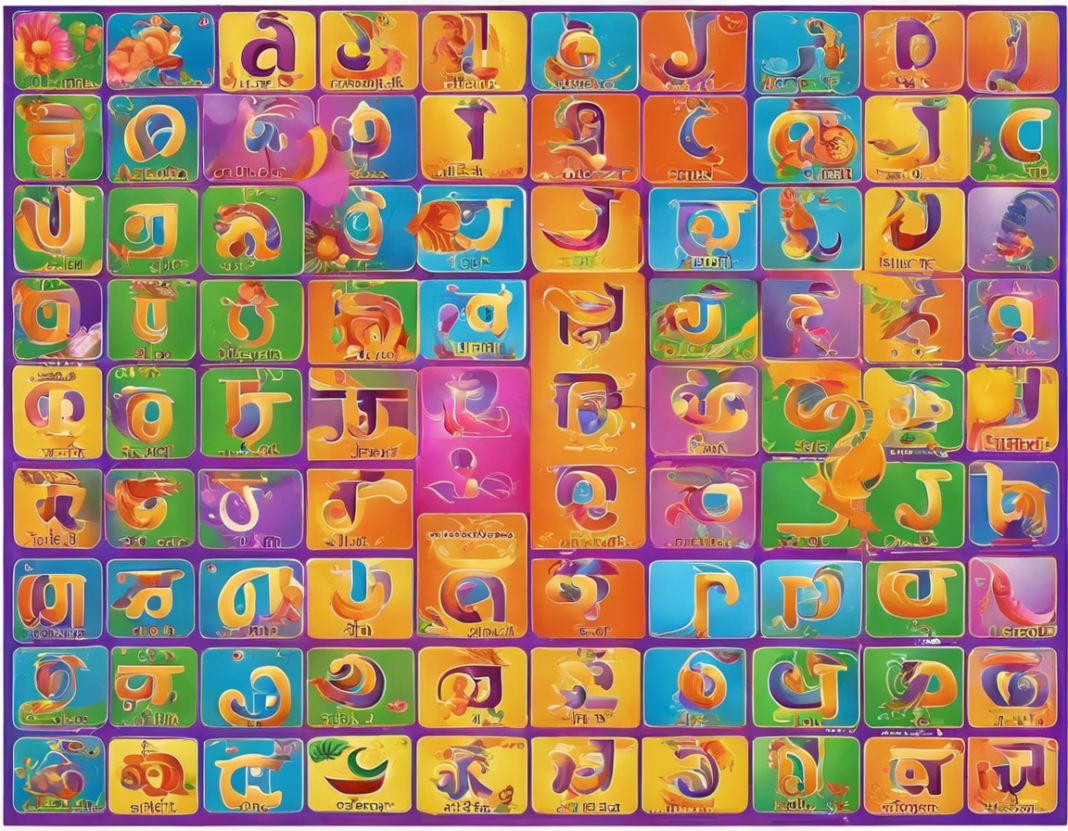Introduction
Languages are an integral part of a culture, shaping the way people communicate and express themselves. Punjabi and Hindi are two prominent languages spoken in India, with rich histories and unique linguistic characteristics. In this article, we will explore the Punjabi and Hindi alphabets, analyzing their similarities and differences to gain a better understanding of the linguistic landscape in India.
Punjabi Alphabets
Punjabi is an Indo-European language spoken primarily in the Punjab region of India and Pakistan. The Punjabi alphabet is known as Gurmukhi, derived from the words “Guru” (spiritual teacher) and “Mukhi” (mouth). The Gurmukhi script consists of 35 consonants (vyanjan), 10 vowels (swar), and 11 symbols to indicate tones and punctuation.
Hindi Alphabets
Hindi is also an Indo-European language spoken widely in India, particularly in the northern regions. The Hindi alphabet, known as Devanagari, consists of 33 consonants and 11 vowels. Devanagari script is used to write various languages in India, including Hindi, Sanskrit, and Marathi.
Comparison of Punjabi and Hindi Alphabets
-
Consonants: Both Punjabi and Hindi alphabets exhibit similarities in their consonant sounds. For example, the consonants “क” (ka), “ख” (kha), “ग” (ga) in Hindi are equivalent to “ਕ” (ka), “ਖ” (kha), “ਗ” (ga) in Punjabi.
-
Vowels: While both languages have similar vowel sounds, the symbols used to represent them differ. For instance, the vowel “अ” (a) in Hindi is represented by the symbol “ਅ” in Punjabi.
-
Nasal Sounds: Punjabi and Hindi both have nasal sounds represented by nasalized vowels and consonants. In Punjabi, nasalization is denoted by a dot at the bottom of the vowel symbol, while in Hindi, a chandrabindu (moon-shaped symbol) is used.
-
Unique Characters: Each language has certain unique characters that are not present in the other. For example, Punjabi has characters like “ਙ” (Na), “ਲ਼” (La), which are not present in the Hindi alphabet.
Distinguishing Features of Punjabi and Hindi Alphabets
-
Matra System: Punjabi uses a unique matra (diacritical mark) system to represent vowels combined with consonants. This system allows for the formation of complex sounds and words in Punjabi.
-
Tone Markings: Punjabi script includes symbols to indicate tones, such as Ankan (high tone), Dulainkan (low tone), and Tippe (stopped tone). These markings are crucial for proper pronunciation and comprehension in Punjabi.
-
Combination Characters: Both languages use combination characters to represent sounds not found in the basic set of consonants and vowels. These characters are formed by combining two or more basic characters to create a new sound.
-
Use of Numerals: In both Punjabi and Hindi, numerals are represented using distinct characters. The numerals in Punjabi follow the Gurmukhi script, while Hindi numerals are represented in Devanagari.
Frequently Asked Questions (FAQs)
- Are Punjabi and Hindi alphabets similar?
-
While Punjabi and Hindi alphabets share some common sounds, they also have unique characters and symbols that distinguish them from each other.
-
How many vowels are there in the Punjabi alphabet?
-
The Punjabi alphabet consists of 10 vowels, known as swar, which are represented by specific symbols in the Gurmukhi script.
-
What is the significance of the Gurmukhi script in Punjabi culture?
-
The Gurmukhi script holds immense cultural and religious significance for Punjabi speakers, as it is used to write sacred texts, hymns, and literature.
-
Can Hindi speakers easily learn to read and write in Punjabi?
-
Given the similarities in certain sounds and characters, Hindi speakers may find it relatively easier to learn the Punjabi alphabet compared to speakers of other languages.
-
How do tone markings in Punjabi differ from those in Hindi?
- Punjabi tone markings, such as Ankan, Dulainkan, and Tippe, are distinct symbols used to denote specific tones in pronunciation, whereas Hindi uses different diacritical marks for tone variations.
In conclusion, the Punjabi and Hindi alphabets reflect the rich linguistic diversity present in India. By comparing and contrasting their features, we can appreciate the intricate details of these languages and how they shape the cultural identity of the people who speak them.
